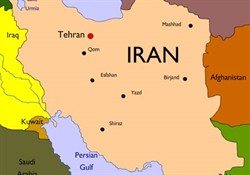Iran: Farsi Translation and Localization
Iran, known as Persia until 1935, is located in West Asia and borders the Caspian Sea, Persian Gulf and Gulf of Oman. Iran has a complex history deeply intertwined with the surrounding regions.
Iran’s earliest recorded history dates back to 550-330 BC when the Achaemenid dynasty ruled the first Persian Empire. The timeline of Iran’s history is fascinating to read through. Ancient events like the arrival of Islam in 636 AD and emergence of Farsi in the 9th century to modern day history like the Shah’s installation in the 1930’s and exile in the 1970’s and the corresponding American hostage crisis to the last few decades of U.S. and UN-imposed sanctions, a nuclear crisis and eventual nuclear deal, make this country’s history extremely complicated.
This blog will cover the Farsi language and tips for Farsi translation and localization.

History of Farsi
As stated above, the emergence of modern day Persian, known as Farsi, dates back to the 9th century. Farsi belongs to the Indo-Iranian branch of the Indo-European family of languages. Iranian languages are known from three periods of time: Old, Middle and New (Modern), corresponding to the three eras of Iranian history. Farsi, or New Persian, is a direct descendent of Middle and Old Persia. The language has changed little in the last thousand years except for the addition of modern words and loan words from other languages.
Farsi is the official national language of Iran, Afghanistan and Tajikistan. Farsi is the dialect spoken in Iran, Iraq and throughout the Persian Gulf. Dari is the dialect spoken in Afghanistan. Tajik is the dialect spoken in Tajikistan and Uzbekistan. There are an estimated 110 million Farsi speakers worldwide.
Farsi Language Facts
- Farsi uses a slightly modified Arabic script, written right to left (except for numerals).
- Vowels, when indicated, are written with diacritics and/or combinations of consonant letters.
- There are six vowel sounds and 23 consonants.
- Seven letters cannot join each other.
- In Iran, men need the word “agha” used before their surnames. For women, the word “khanoom” goes before the surname.
- Farsi has loan words from Arabic, Turkish, Mongolian, French, English, Greek, Aramaic, and Indian languages.
Iranian Localization
If you are considering marketing your products and services to the Iranian market, below are some brief, but important tips marketers should keep in mind.
- Less price conscious. Consumers are not very involved with the price aspect of the purchase and spend little time researching prices.
- There is not a significant difference between males and females in price consciousness and value consciousness.
- Statistical analyses revealed that females engage in prestige and hedonic values more often than males in apparel shopping, which is consistent with previous research findings that found women to be more fashion conscious.
- Iranian marketers should pay special attention to females, younger people and should include appropriate name-brand apparel for them.
Conclusion
Iran is a country with a rich history. The history of Farsi is no exception. Persian has been an important cultural language in regions of Western Asia, Central Asia and South Asia and Farsi carries on that tradition today.
